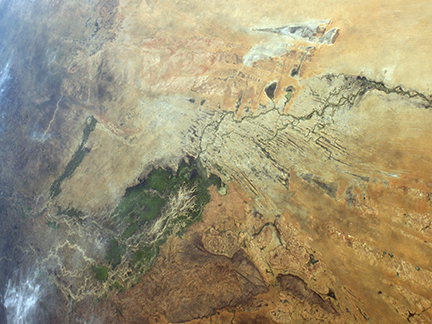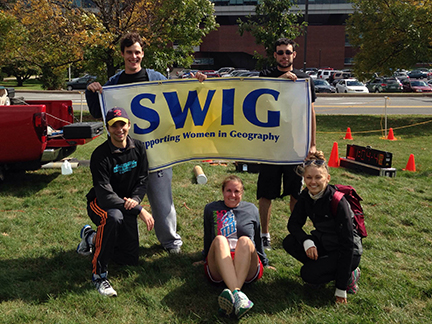IMAGE OF THE WEEK
Apart from the delta of the Nile River, the inland delta of the Niger River may be Africa’s most famous. Astronauts aboard the International Space Station took this photograph of the region where the Niger and other rivers flow out of the wetter, more vegetated Sahel into the Sahara Desert. The rivers inundate the lush green wetland of the delta.
GOOD NEWS
- A Human Factors Lab article has been accepted into The Cartographic Journal. The article is led by former graduate student Grant McKenzie and is titled, “The Interaction of Landmarks and Map Alignment in You-Are-Here Maps.”
NEWS
October 31 Coffee Hour: Mark A. Blumler “Agricultural History in Geographical and Evolutionary Perspective”
Much scholarly attention has been paid to agricultural origins, and to developments subsequent to 1492, but relatively little to the long, intervening time period. In this presentation, I outline agricultural history from inception up through the “Columbian Exchange.”
- 3:30 to 5:00 p.m.
- Refreshments are offered in 319 Walker Building at 3:30 p.m.
- The lecture begins in 112 Walker Building at 4:00 p.m.
- Coffee Hour To Go
Next Week: Ingrid Nelson, Assistant Professor, Department of Geography and Environmental Studies Program, The University of Vermont.
Zelinsky’s collection at Libraries; some materials available to take
Professor Emeritus Wilbur Zelinsky’s family has donated many of his maps and books to the University Libraries. Many of his books (over 400) will be offered to interested takers. These books will be available on November 19, 2014, at the GIS networking reception, 4:00-5:00 p.m. in 208 Paterno Library. These books span many geography topics from culture, physical geography, urban studies, and more.
Penn State, ClearWater Conservancy collaboration results in Musser Gap Greenway
The Musser Gap Greenway, the result of years of collaboration by Penn State and ClearWater Conservancy, officially opened to the public on Friday, Oct. 17. The Greenway links the Centre Region bikeway system to the Musser Gap trail allowing for travel between the State College area and Rothrock State Forest.



